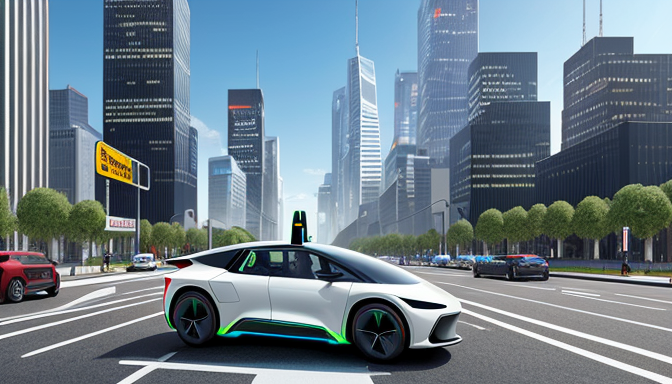Welcome to the future of driving! It’s an exciting time in the automotive world as we witness a remarkable transformation in how we think about cars. Imagine a world where your vehicle not only drives you but also understands your needs, thanks to cutting-edge AI driving systems. These systems are designed to learn from your habits, making every ride smoother and more personalized. It’s like having a co-pilot who knows you better than you know yourself!
But that’s just the tip of the iceberg. The integration of smart features is revolutionizing the driving experience. Picture this: your car can automatically adjust to changing weather conditions, optimize fuel efficiency, and even communicate with other vehicles on the road to avoid traffic jams. Sounds like science fiction, right? Well, it’s becoming our new reality!
Moreover, the futuristic concepts we’re seeing today are not just about flashy designs; they are grounded in sustainability. With electric vehicles (EVs) gaining traction, manufacturers are focusing on eco-friendly practices that reduce carbon footprints. This shift is not just a trend; it’s a necessity for our planet. As we embrace these innovations, we pave the way for a cleaner, greener future.
In conclusion, the cars of tomorrow are not merely machines; they are intelligent companions that will redefine our relationship with transportation. Are you ready to embrace this thrilling journey into the future?
Innovative Technologies in Automotive Design
In the rapidly evolving world of automobiles, innovative technologies are not just buzzwords; they are the backbone of a new era in automotive design. Imagine a car that not only drives itself but also learns from its environment—this is the promise of AI driving systems. These systems utilize advanced algorithms and machine learning to analyze real-time data, making split-second decisions that enhance both safety and efficiency. It’s like having a co-pilot who never sleeps!
But it doesn’t stop there. The integration of smart features has transformed the driving experience into something truly futuristic. From voice-activated controls to predictive maintenance alerts, these technologies are designed to make our lives easier. Picture this: your car knows when you need an oil change before you even realize it! This level of connectivity not only improves vehicle performance but also fosters a deeper relationship between drivers and their cars.
Moreover, the use of smart materials in automotive design is revolutionizing how vehicles are built. These materials are lighter, stronger, and often more sustainable than traditional options. For instance, carbon fiber and bio-composites are paving the way for cars that are not only more fuel-efficient but also have a smaller environmental footprint. In essence, innovative technologies are not just enhancing performance; they are redefining what it means to be a vehicle in the 21st century.
As we look ahead, the future of automotive design is bright, filled with possibilities that will make our driving experience safer, more efficient, and incredibly exciting!

The Rise of Autonomous Vehicles
As we zoom into the future, autonomous vehicles are not just a dream; they are becoming our reality. Imagine sitting in your car, sipping coffee, while your vehicle navigates through traffic smoothly. Sounds like a scene from a sci-fi movie, right? But thanks to groundbreaking advancements in AI driving systems and smart features, this is quickly becoming a norm. These vehicles are equipped with sophisticated sensors and algorithms that allow them to interpret their surroundings, making split-second decisions that enhance safety and efficiency.
One of the most exciting aspects of self-driving technology is its potential to revolutionize urban mobility. Picture bustling cities where cars communicate with each other to prevent accidents, or where ride-sharing becomes seamless and efficient. It’s not just about convenience; it’s about creating a sustainable future. By reducing the number of vehicles on the road and optimizing traffic flow, we can significantly lower emissions and improve air quality.
However, the journey towards fully autonomous vehicles is not without its bumps. Safety concerns loom large in the minds of consumers and regulators alike. To address these issues, companies are investing heavily in testing and developing robust safety protocols. Here’s a quick look at some key technologies driving the rise of autonomous vehicles:
| Technology | Description |
|---|---|
| LiDAR | Uses laser light to create a 3D map of the environment. |
| Computer Vision | Enables vehicles to interpret visual data from cameras. |
| Machine Learning | Allows vehicles to learn from experiences and improve over time. |
In conclusion, the rise of autonomous vehicles is not just about technology; it’s about redefining our relationship with transportation. Are you ready to embrace this exciting shift?
Frequently Asked Questions
- What are the key innovations in automotive technology?
The automotive industry is buzzing with innovations like electric powertrains, which are not just eco-friendly but also enhance performance. Smart materials that adapt to conditions and advanced aerodynamics are also making cars more efficient and sustainable. It’s like giving vehicles a brain and a body that work in perfect harmony!
- How do autonomous vehicles work?
Autonomous vehicles utilize a mix of sensors, cameras, and artificial intelligence to navigate roads without human intervention. Imagine a car that can see, think, and drive itself—it’s like having a personal chauffeur who never gets tired or distracted!
- What are the safety concerns with self-driving cars?
While self-driving cars promise convenience, there are valid safety concerns. Issues like software malfunctions and the unpredictability of other drivers can pose risks. However, ongoing advancements aim to make these vehicles safer than ever, potentially reducing accidents significantly.
- How will autonomous vehicles change urban mobility?
Autonomous vehicles could redefine urban mobility by reducing traffic congestion and parking needs. Picture a city where cars drop you off and park themselves, freeing up space and making urban life smoother and more enjoyable!